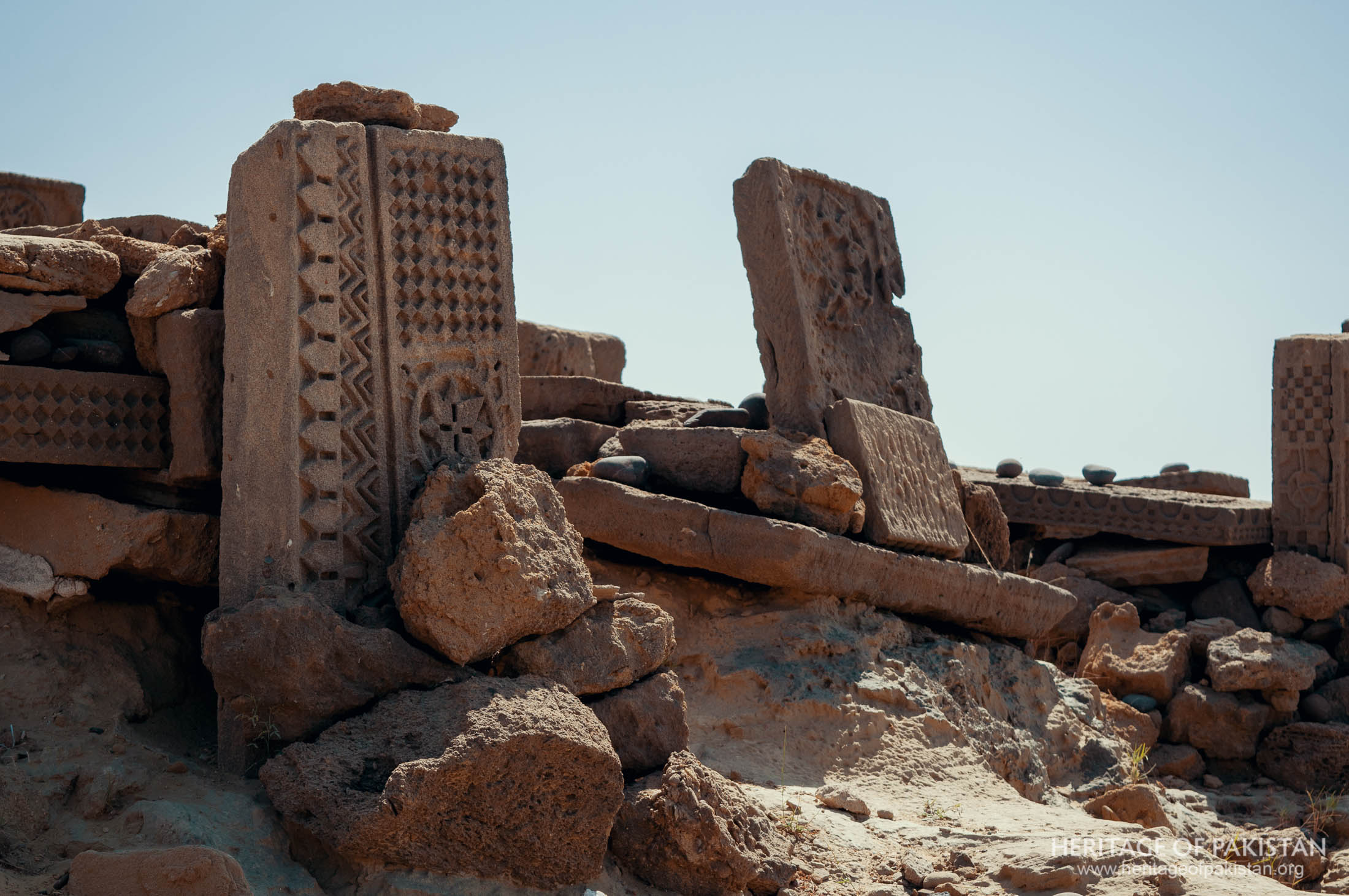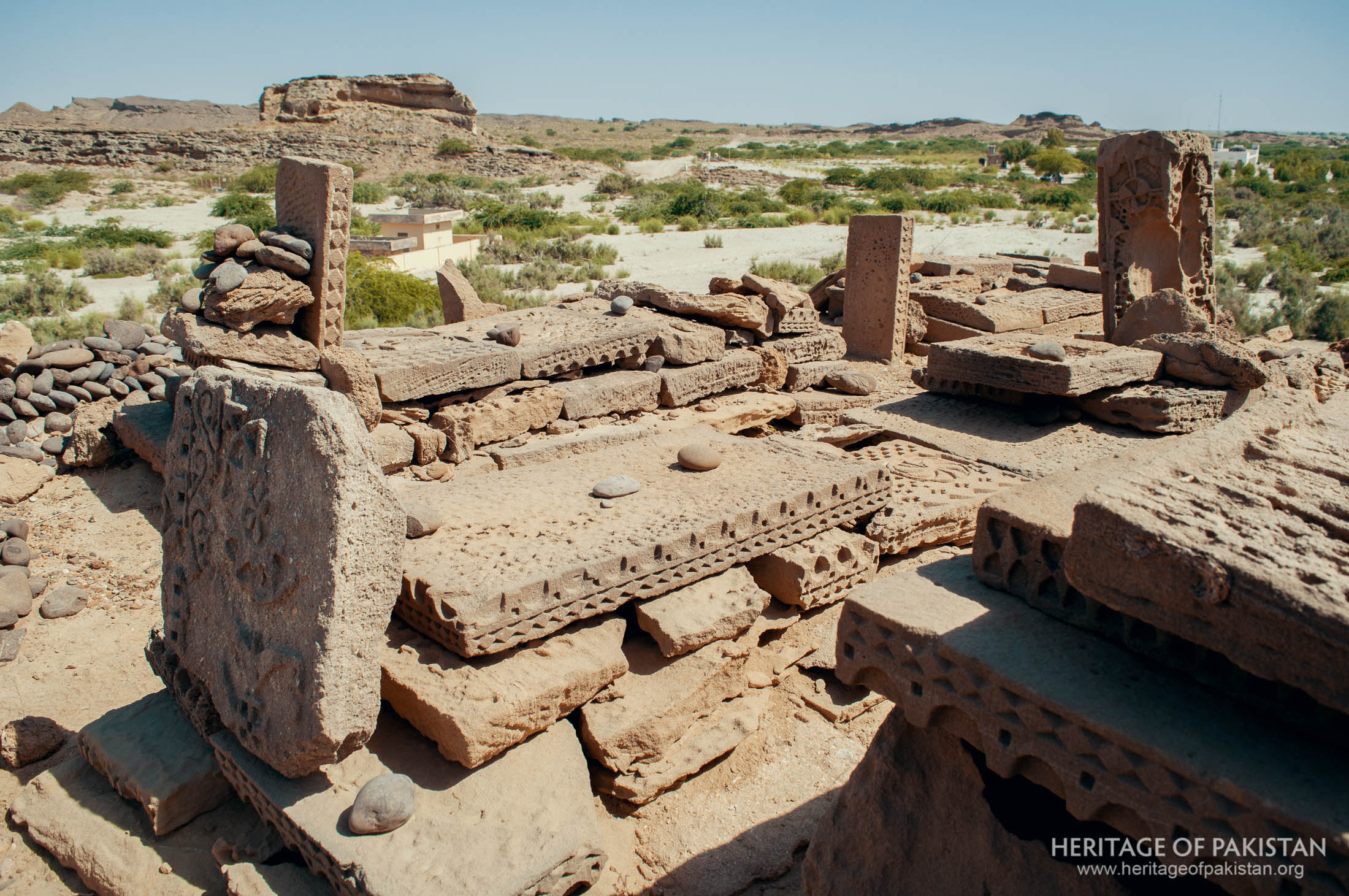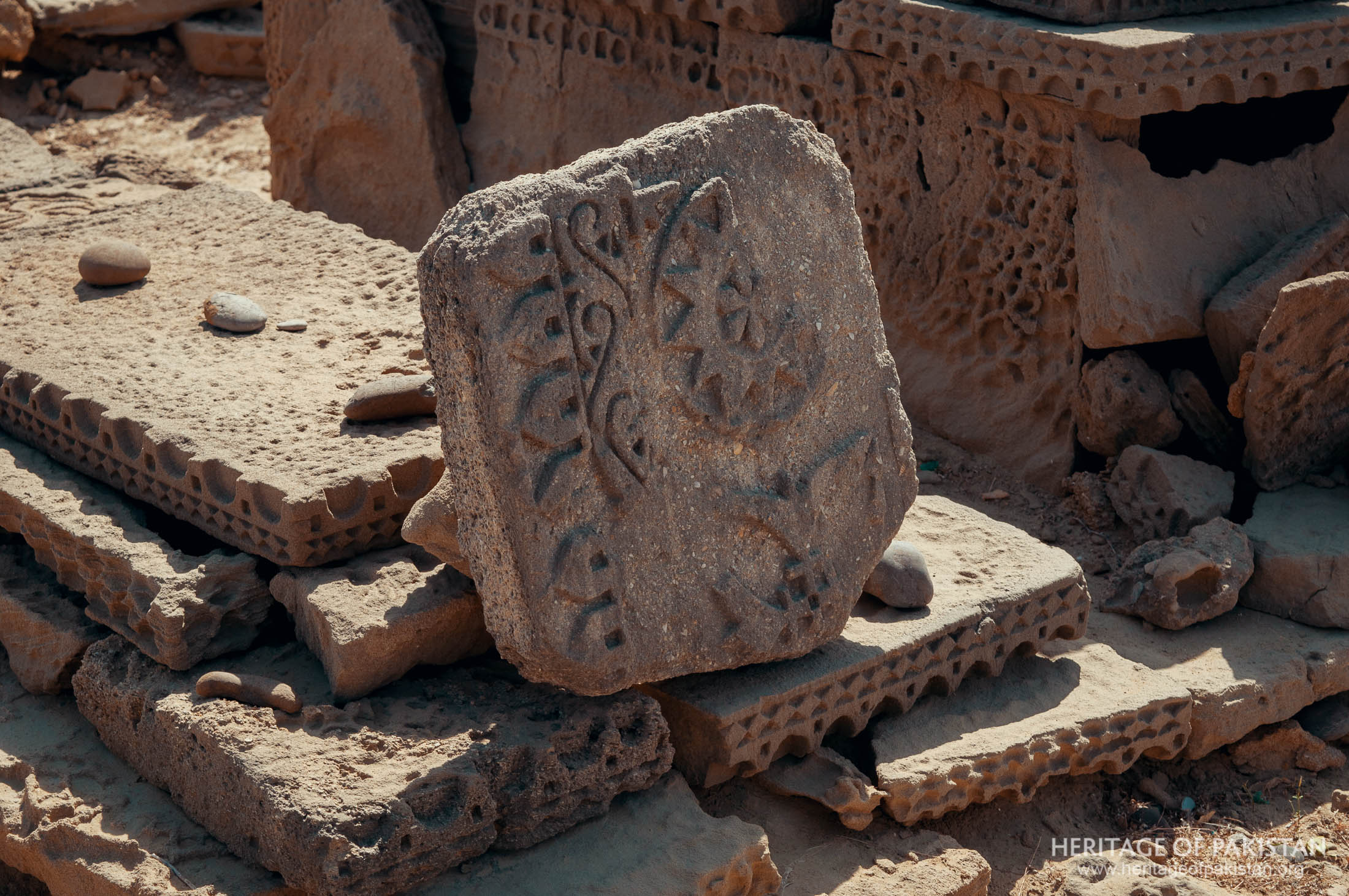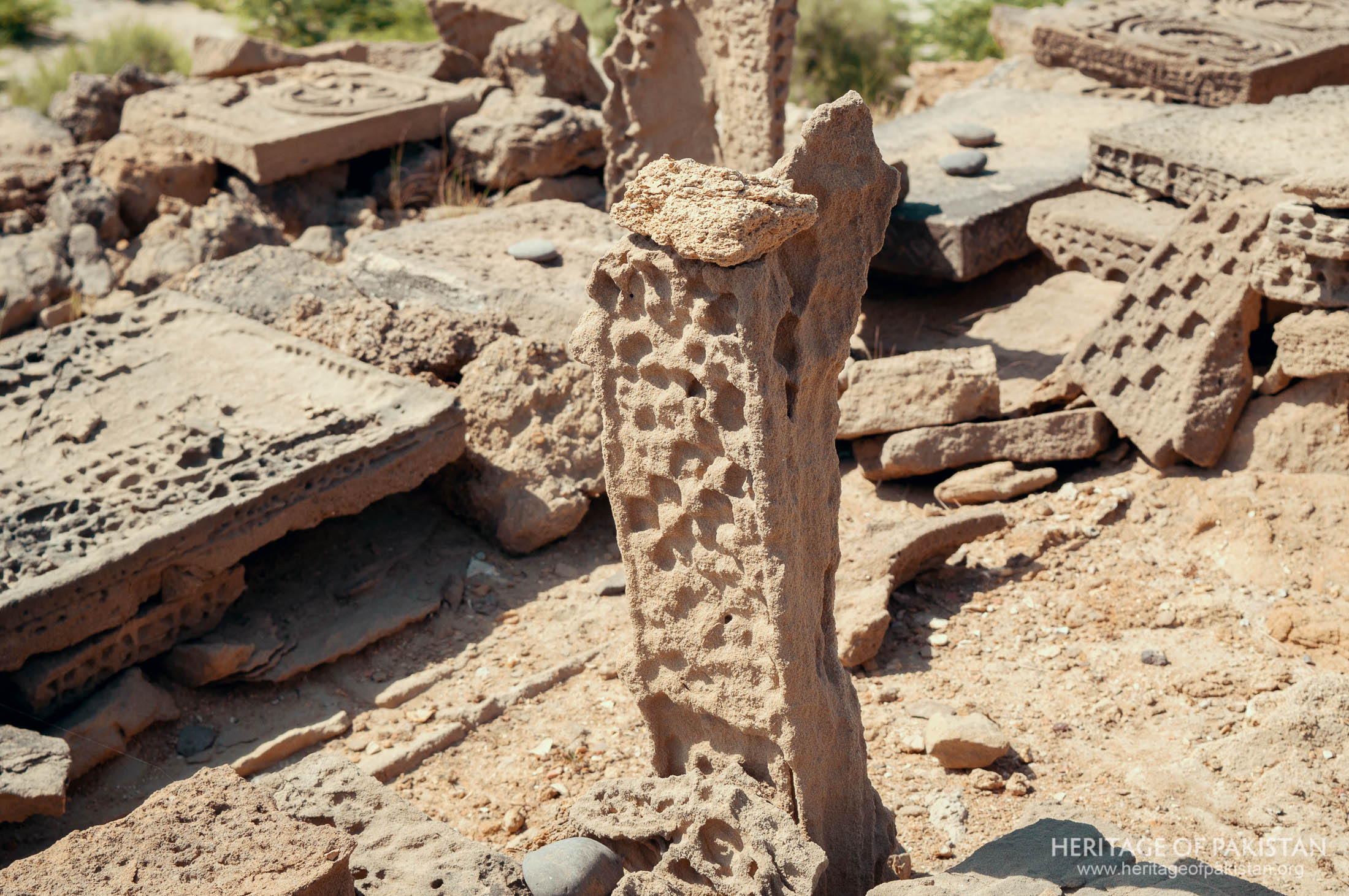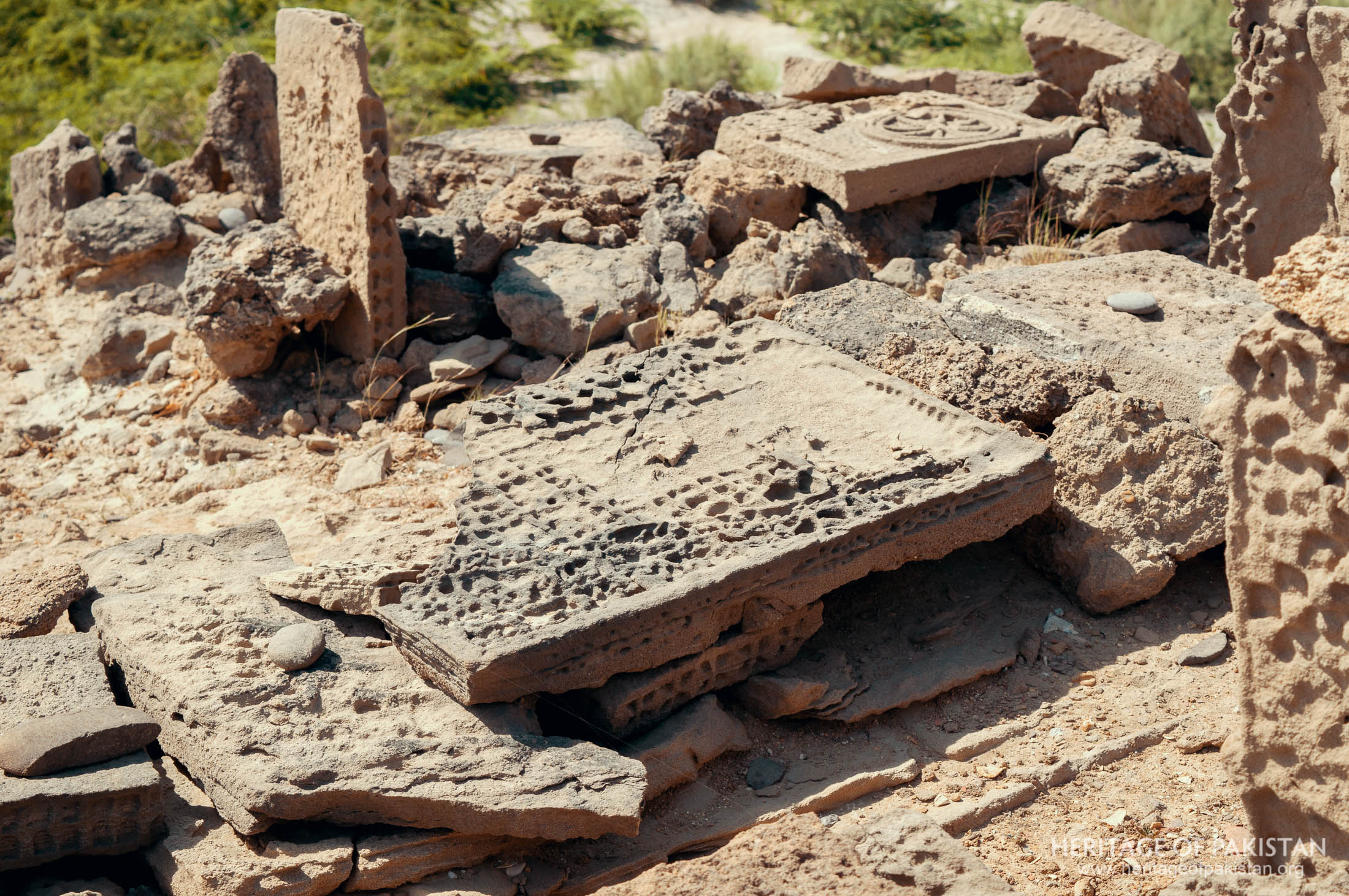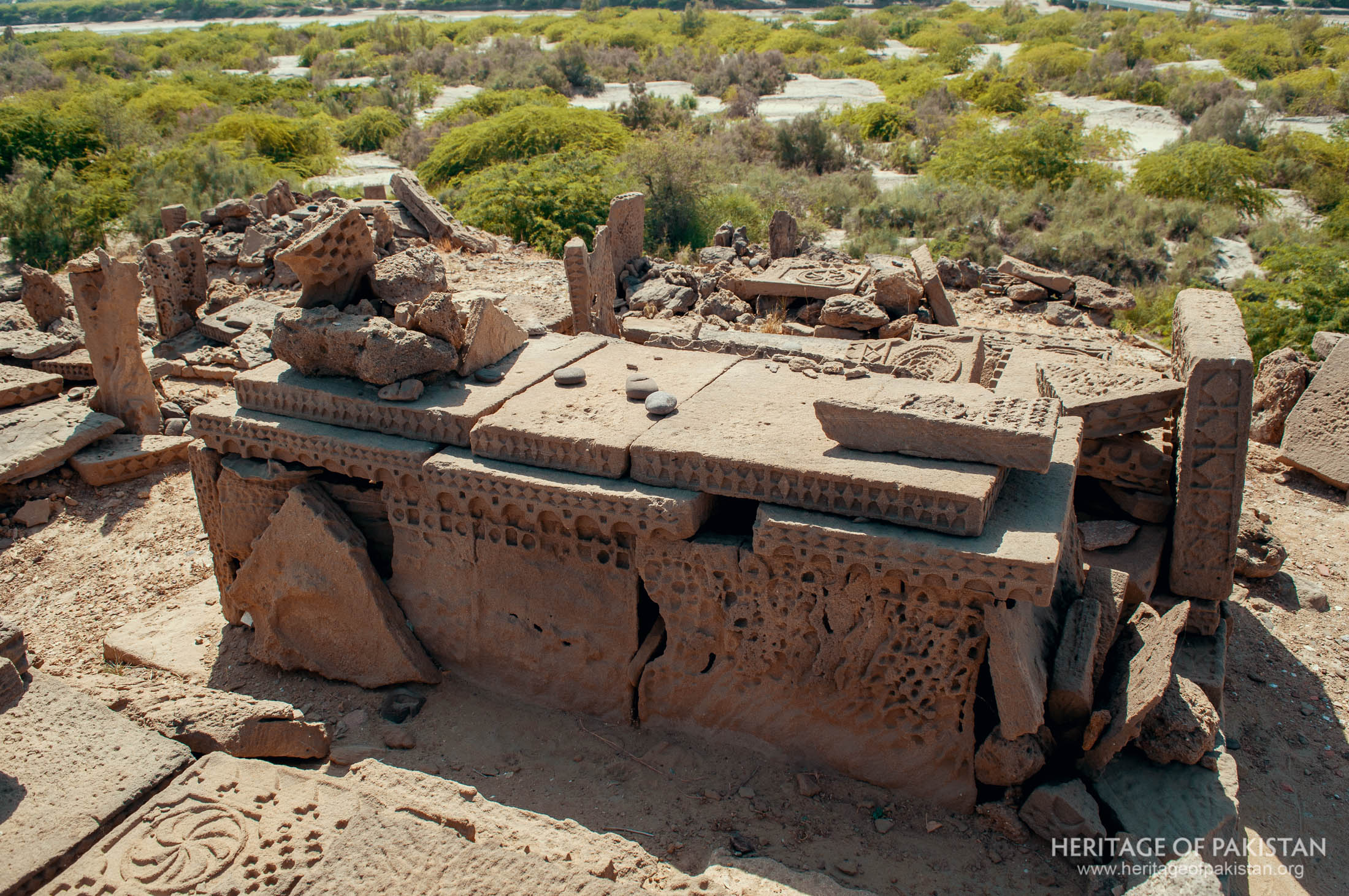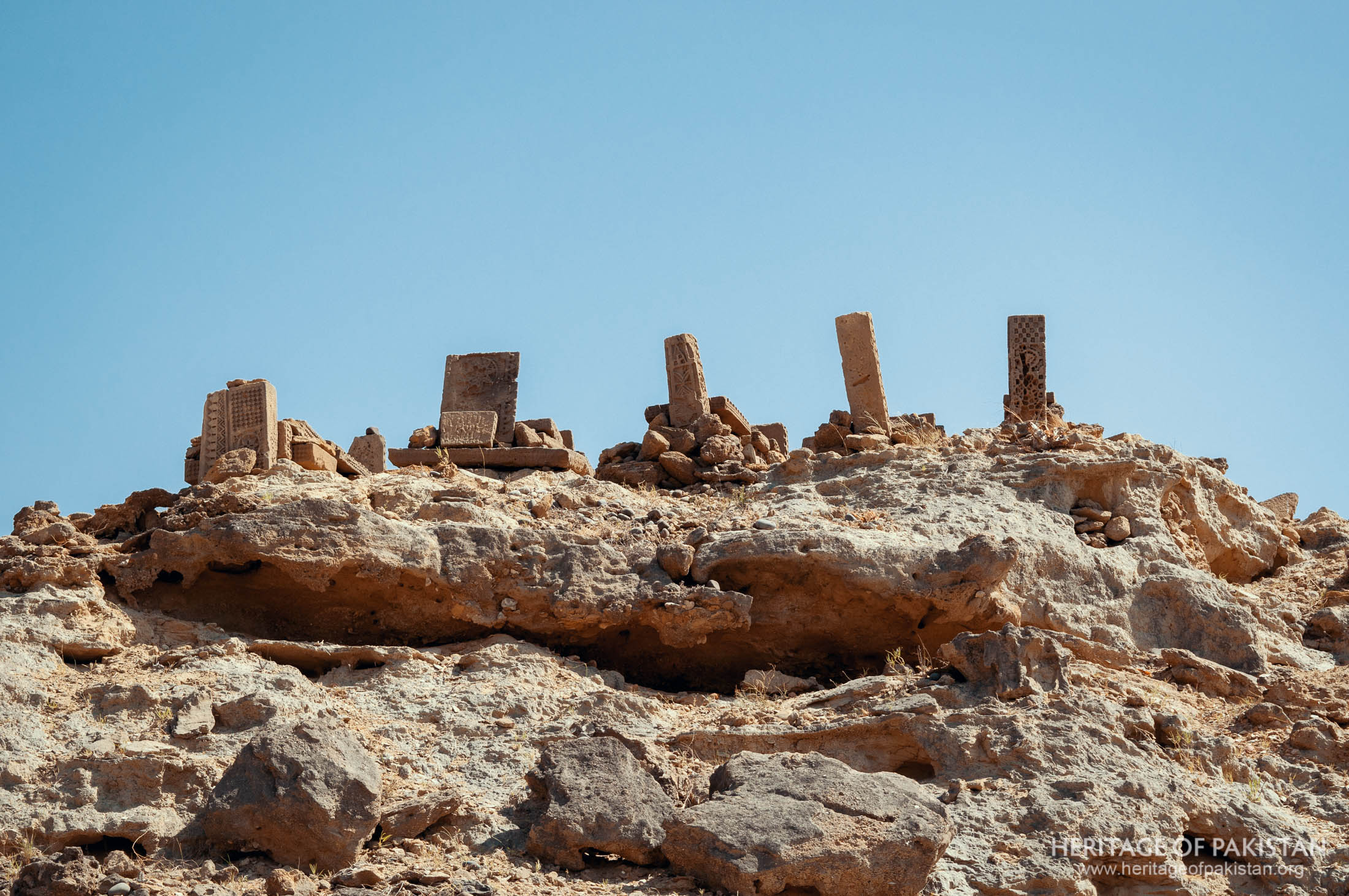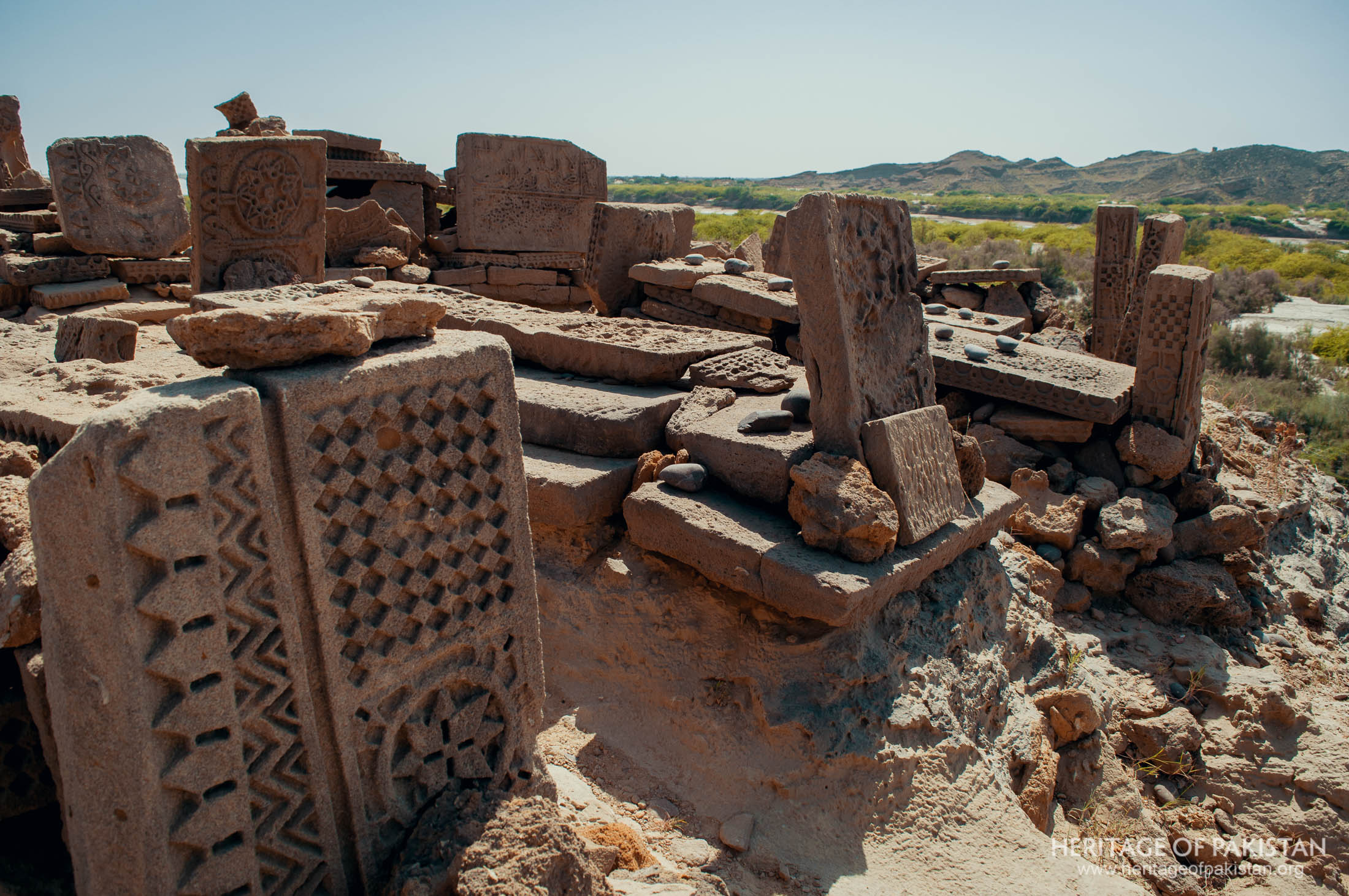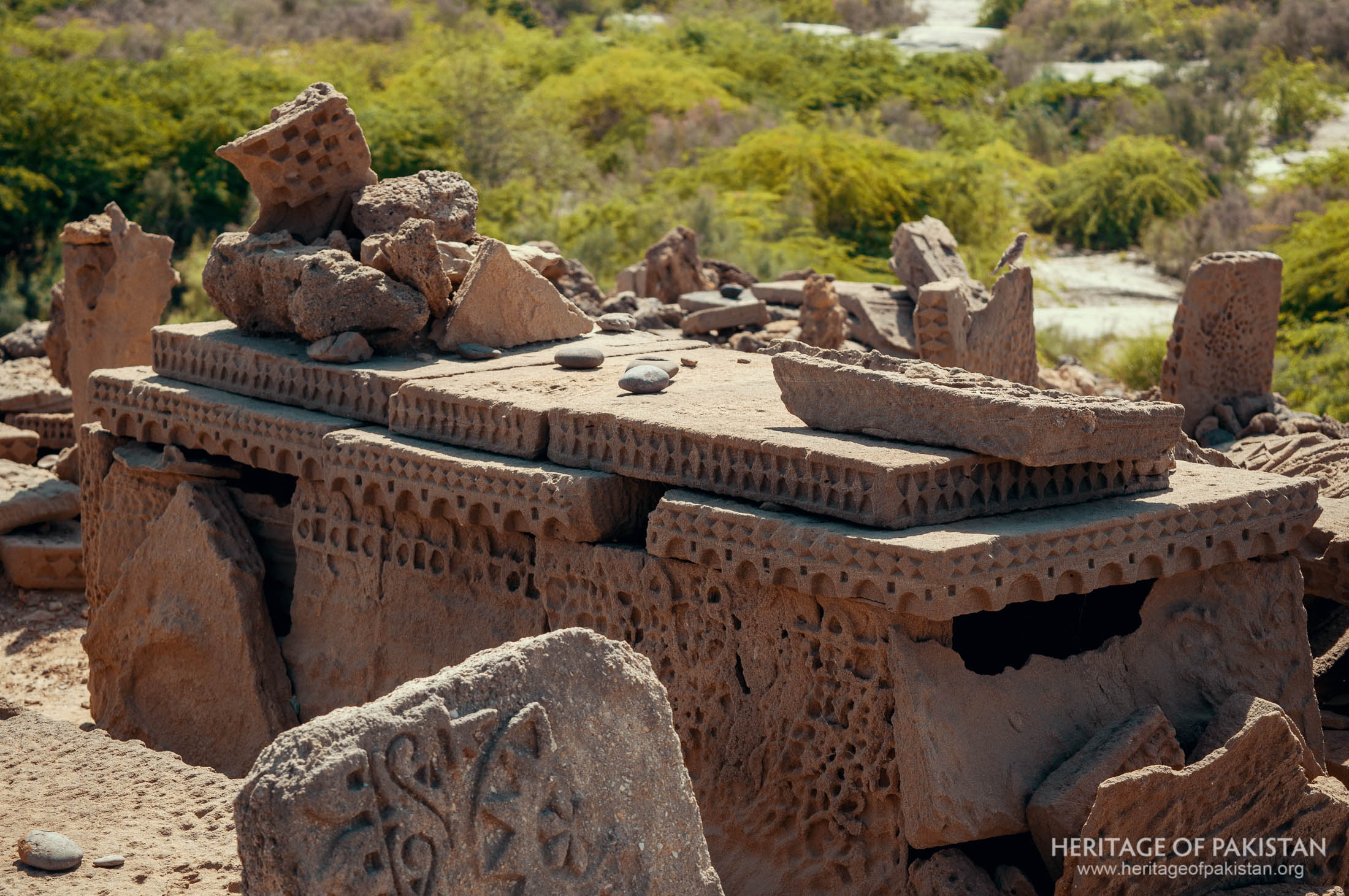Textarea
The graves attributed to the soldiers of the 8th Century Arab invader Muhammad bin Qasim are located in Aghor, within Hingol National Park, Balochistan on the Makran Coastal Highway.
Positioned on a small mound at the junction of the highway and the road leading to Hinglaj Mata Mandir.
The graves are crafted from stone and adorned with intricate carvings and engravings that closely resemble the Chowkandi-style tombs near Karachi
This distinctive style of stone carving is believed to have originated in Gujarat before spreading to the regions now comprising Sindh.
These graves have been associated with the Muslim General Muhammad bin Qasim
However, many scholars argue that this attribution is historically inaccurate, and the graves were likely constructed in a later period.
Muhammad bin Qasim, an Arab general, arrived in Sindh in 712 AD during the Umayyad Caliphate.
This campaign marked the beginning of Islamic governance in the region, introducing early examples of Islamic architecture and earning Sindh the title ‘Bab-ul-Islam’ (Gateway to Islam).
The attribution of the Aghor graves to Muhammad bin Qasim appears to be a result of local folklore rather than factual evidence.
While the graves remain significant for their artistic and cultural value, their connection to the Arab invader is not supported by historical or archaeological findings.

